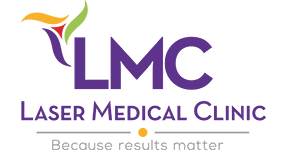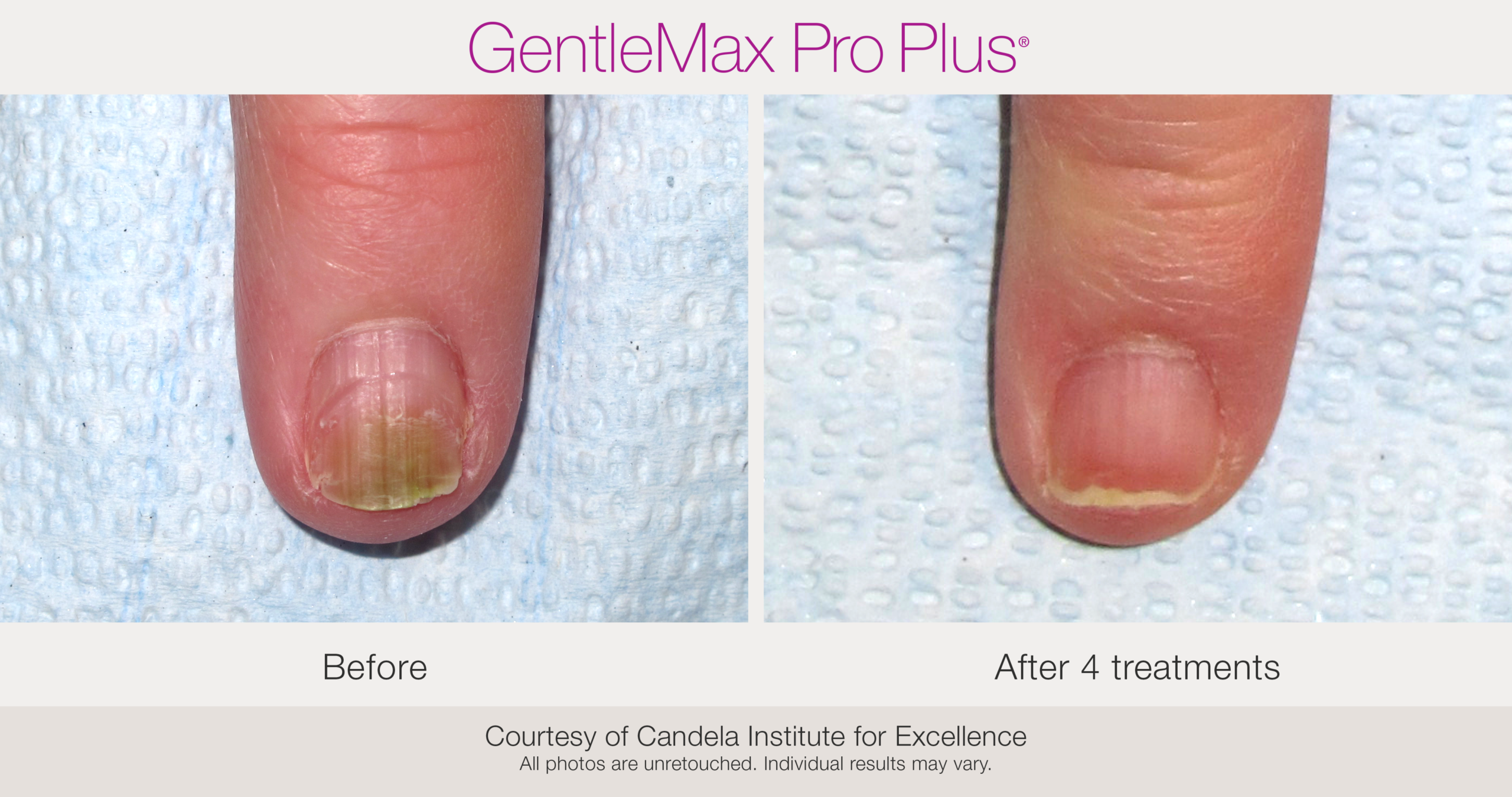
Laser Nail Fungus Treatment
Nail Fungus Treatment At a Glance
Our treatment for onychomycosis utilizes the cutting-edge Syneron GentleMax Pro PLUS Nd: YAG Laser Series, offering a comprehensive approach:
Restoration of Nail Health
The treatment facilitates the natural healing and restoration of both toenails and fingernails, returning them to a healthy state.
Relief from Discomfort
The procedure significantly reduces the discomfort and irritation often caused by nail fungus.
Minimized Side Effects
Unlike common oral treatments for fungal infections, our laser therapy minimizes the risk of potential side effects, offering a safer alternative for nail fungus treatment.
Enhanced Nail Appearance
As the fungus is effectively eradicated, noticeable improvements in the nails’ appearance occur. This includes the elimination of any unpleasant odors and brittleness, leading to healthier-looking nails.
Precise Fungal Inhibition
This advanced laser technology specifically targets and suppresses fungal growth beneath the affected nails, ensuring no harm to the surrounding skin and tissue.
Nail fungus treatment is a must when dealing with nail fungus infections. While these infections can be sometimes mild and painless, they often lead to significant discomfort and self-consciousness about the appearance of your nails.
Fortunately, there are numerous treatment methods available, including oral antifungal medications, medicated creams, and even nail removal for severe cases.
At LMC – Laser Medical Clinic, we specialize in combating fungal nail infections using advanced laser technology. This innovative treatment is suitable for everyone, regardless of gender, and effectively addresses fungal infections in both toenails and fingernails.
Our approach ensures a safe and effective solution to restore the health and appearance of your nails.
Laser nail fungus treatment stands out as a contemporary and effective approach for addressing fungal nail infections. Its safety and ease of use make it an especially appealing choice, especially for individuals who have faced embarrassment due to their condition or who have had to spend substantial financial expenses visiting podiatrists or dermatologists.
One of the primary advantages of this method over traditional treatments is its minimally invasive nature. Unlike surgical procedures that involve nail removal, which can be painful, or the application of topical creams that might cause discomfort, laser treatment is generally gentle and well-tolerated. It targets the fungal infection precisely, eliminating it without causing damage to the surrounding nail or skin. This precision significantly reduces the likelihood of experiencing the pain and complications often associated with more aggressive treatments.
The accuracy of laser technology is noteworthy; it zeroes in on the fungus with minimal discomfort. This targeted approach is crucial for ensuring that the treatment does not adversely affect the nail or surrounding skin. Consequently, patients typically do not encounter the usual discomfort or complications associated with more invasive treatments. This aspect of laser therapy makes it a particularly attractive option for those seeking a less painful and more comfortable treatment experience.
Another significant benefit of laser nail fungus treatment is the reduced recovery time. Patients can resume their regular activities shortly after undergoing the procedure, which is not always the case with more invasive methods. This convenience is a considerable advantage for individuals with busy lifestyles or those who cannot afford extended downtime.
In terms of efficacy, laser treatments have demonstrated a high success rate in clearing up nail fungal infections. Many patients experience significant improvement, making it a reliable option for those seeking effective treatment. The quick and uncomplicated nature of the procedure, coupled with the lack of a lengthy recovery period, further adds to its convenience.
Overall, laser nail fungus treatment presents a modern, efficient, and patient-friendly option for combating fungal infections. Its combination of precision, minimal discomfort, quick recovery, and proven effectiveness makes it a superior alternative to traditional methods, offering a practical and convenient solution for those struggling with this common condition.
Candela GentleMax Pro PLUS: Laser Nail Fungus Treatment F.A.Q
In this section, we’ll respond to some commonly asked questions from patients.
While the term “fungal nail infections” may sound daunting, they are generally not a cause for alarm. These infections are more commonly found in toenails than fingernails. Conditions like athlete’s foot can easily spread to the nails, leading to an infection. Our feet, often enclosed in socks and shoes, create the perfect warm and moist environment for the growth of fungi and yeasts that are typically harmless. As the infection progresses, changes in nail color may occur, which can sometimes result in discomfort or pain. Unfortunately, many people endure this discomfort silently for extended periods.
Nail fungus, also termed onychomycosis, is a fungal infection impacting the nails. This ailment is more prevalent in toenails than fingernails. Key causes and risk factors are:
Fungal Organisms: Dermatophyte fungi are the primary culprits in nail fungus, although yeasts and molds can also induce such infections.
Aging: Older individuals face a higher risk of nail fungus due to diminished blood flow, prolonged exposure to fungi, and slower nail growth.
Sweaty Feet: Persistently moist and warm conditions, like those in sweaty shoes or socks, are conducive to fungal growth, increasing infection risk.
Barefoot in Moist Public Areas: Frequent barefoot walking in damp communal environments, such as gyms, pools, and showers, raises the likelihood of contracting nail fungus.
Skin or Nail Trauma: Injuries near or on the nail can serve as gateways for fungal invasion.
Circulatory Disorders and Diabetes: These conditions, by reducing blood flow to the feet and compromising the immune system, can facilitate fungal infections.
Compromised Immune System: Individuals with weakened immunity are more prone to fungal infections, including nail fungus.
Sharing Personal Belongings: Using shared or contaminated personal items like nail clippers, footwear, socks, or towels can elevate the risk of acquiring nail fungus.
Fungal infections in toenails or fingernails can be effectively treated with laser therapy, provided the nail has not become excessively thickened.
Fungus nail treatment is a revolutionary means to cure fungal nail infections, in a patient-friendly, quick and effective way, utilizing GentleYAG laser light. The laser has no effect on healthy tissue and healthy nail would be visible within weeks. The Laser light heats evenly throughout the depth of the affected nail and skin tissue, effectively weakening and killing the parasitic fungi which have infected the nail. Deep, pulse-profile heating of the nail bed stimulates the killing of parasitic fungus.
The natural growth and immune processes of the body are then able to restore the nail to its pristine state. Compared to traditional methods, the effects of laser light spreads evenly throughout the tissue and is not subject to either the limits of chemical diffusion, as are topical or the induction of hepatoxic side effects, as is the case with oral medications.
The majority of laser nail fungus treatment clients experience zero side effects other than a temporary feeling of warmth during the laser nail fungus treatment and a mild warming sensation after the laser nail fungus treatment.
However, possible side effects from laser nail fungus treatment may include:
- Feeling of warmth and/or slight pain during treatment
- Redness of the treated skin around the nail lasting 24 – 72 hours
- Slight swelling of the treated skin around the nail lasting 24 – 72 hours
- Discoloration or burn marks may occur on the nail. In very rare cases, blistering of the treated skin around the nail and scarring of the treated skin around the nail may occur.
Most people do not feel any pain. Some patients may experience warmth and occasional snapping sensation during the procedure. If you have any pain during the procedure, the laser power may be decreased slightly to reduce any pain. No anesthesia is needed.
The number of treatments varies on the degree of involvement of the nails. It may need 1 to 6 treatments done every 3-4 weeks.
The amount of time varies on the degree of involvement of the nails.
On average, any nail replaces itself every 6 to 9 months through natural growth. Healthy new growth may be visible within few months as the new nail replaces the old. However, follow up treatment with an anti-fungal cream with L-arginine has shown an increase in the speed of healthy nail replacement. Your medical technician may make recommendations for the use of a post-laser treatment nail cream.
You can go back to your daily activities immediately, with no restrictions. Please follow our laser nail fungal treatment pre & post care guide for best results.


